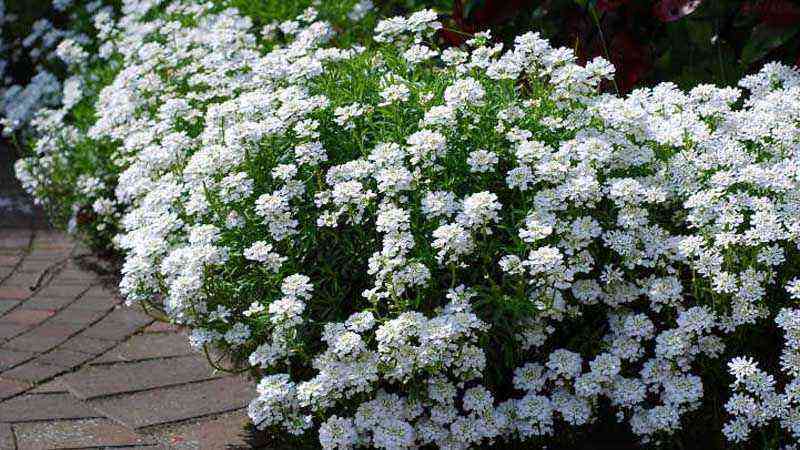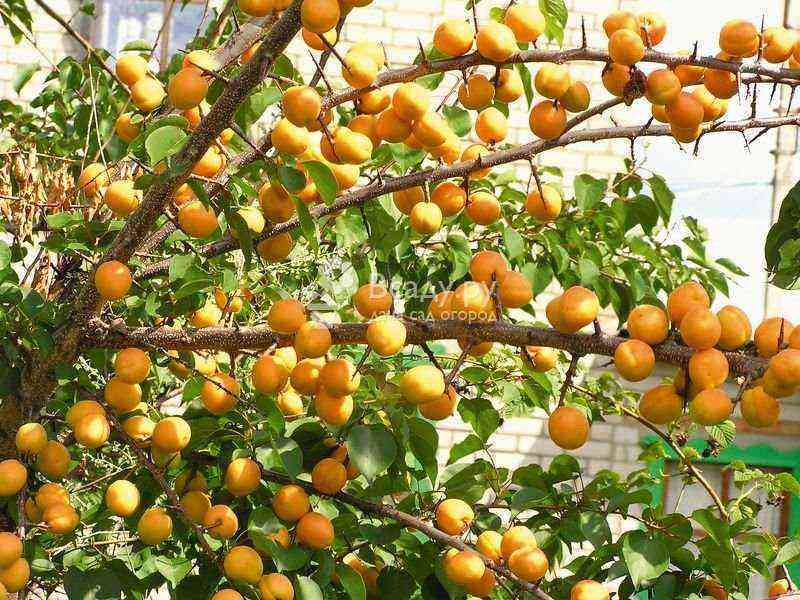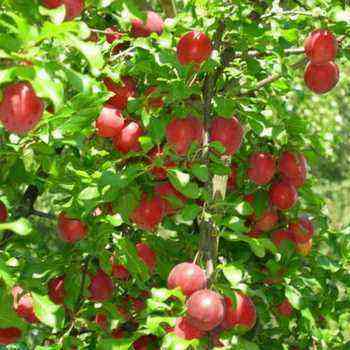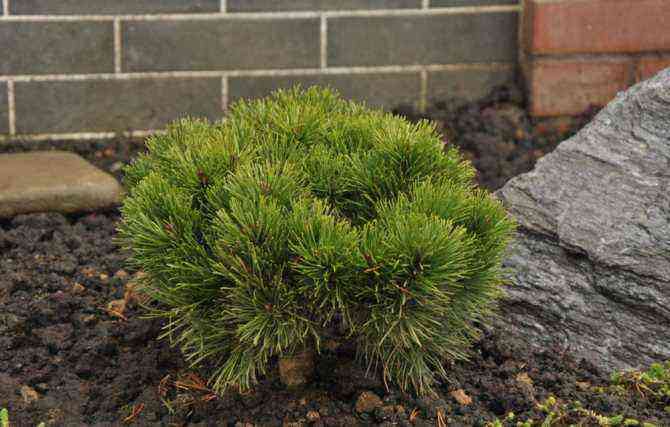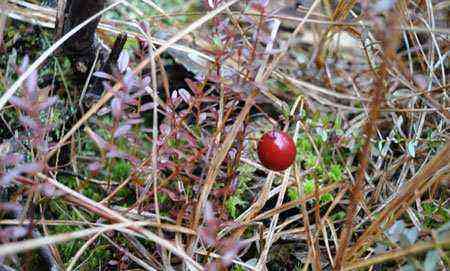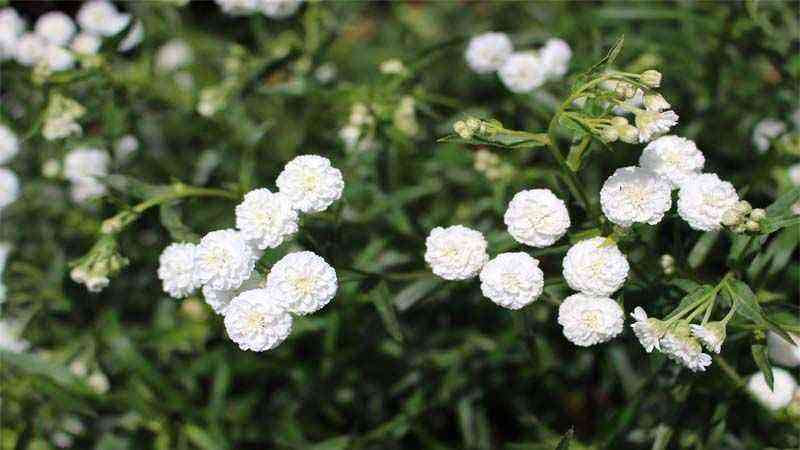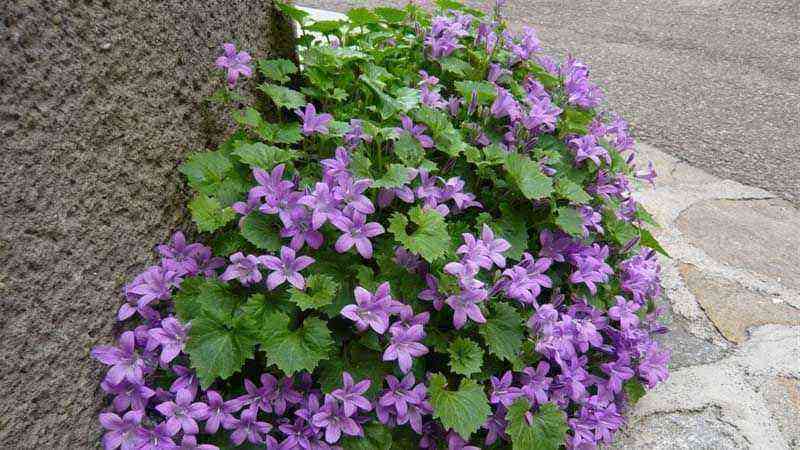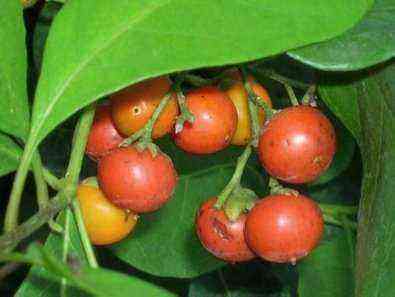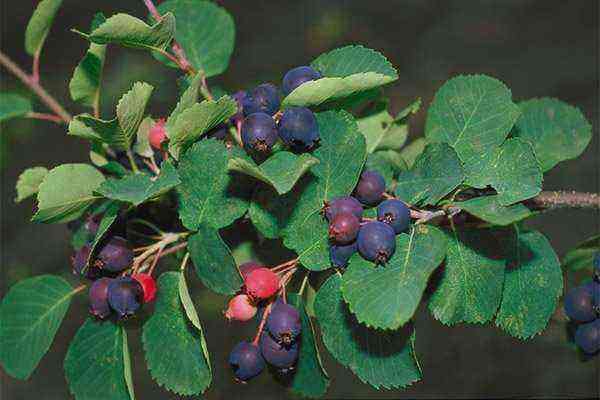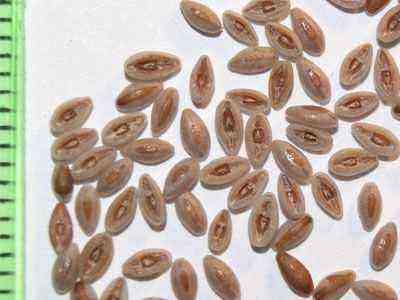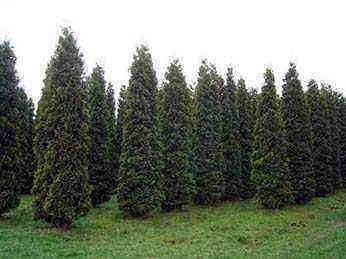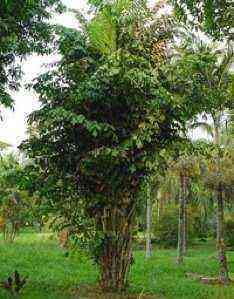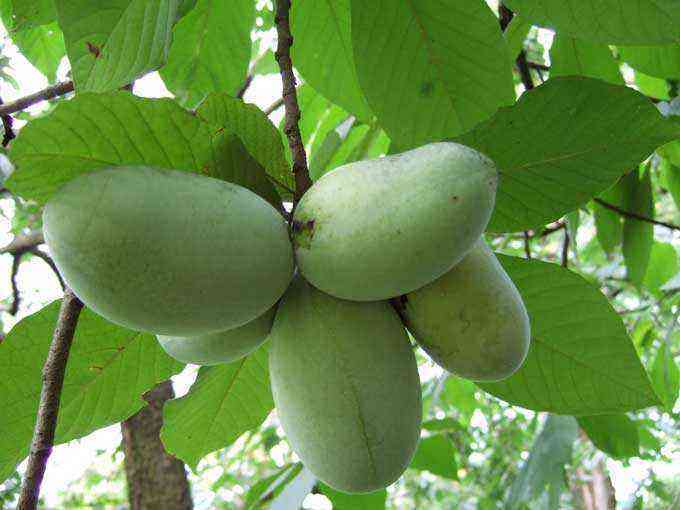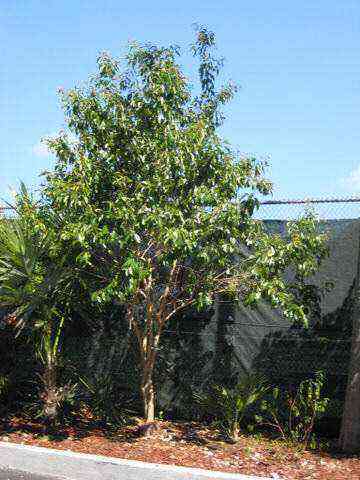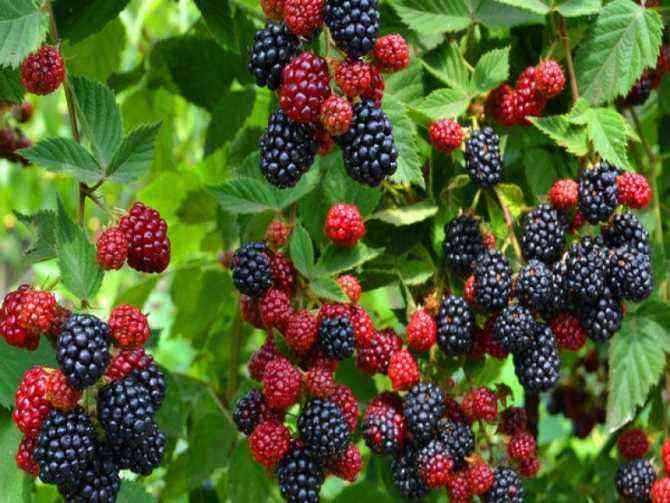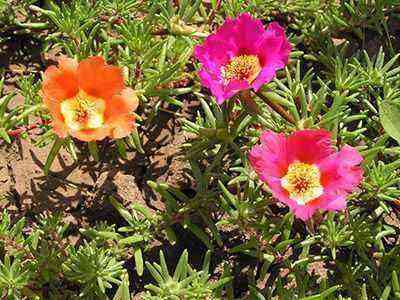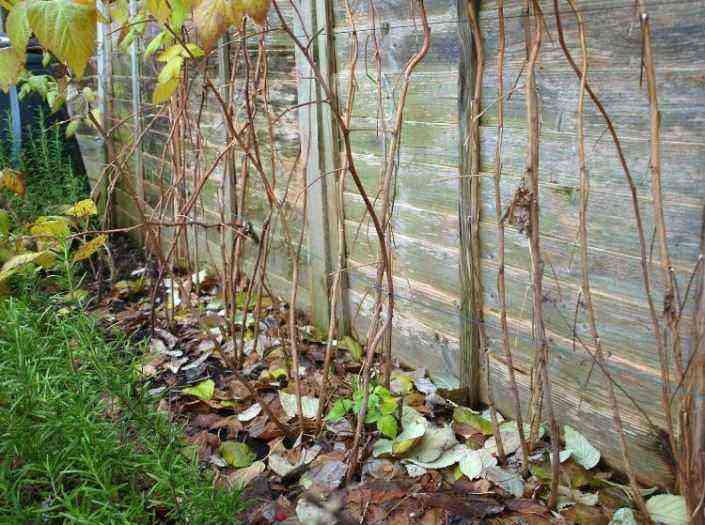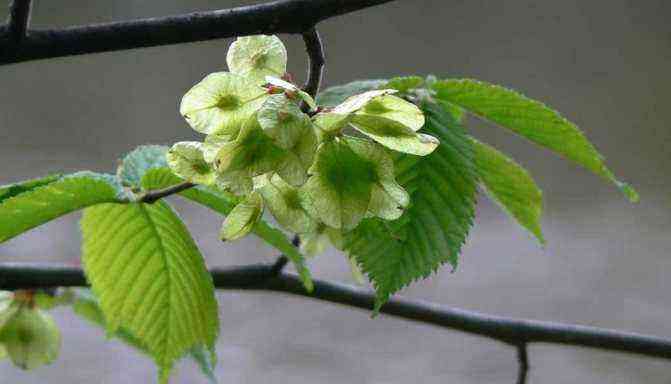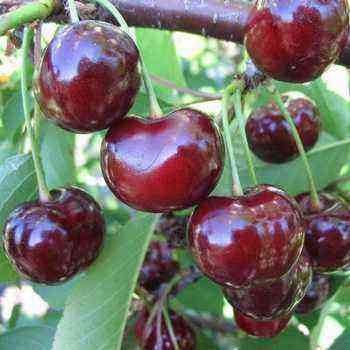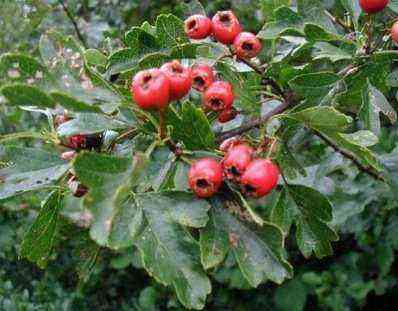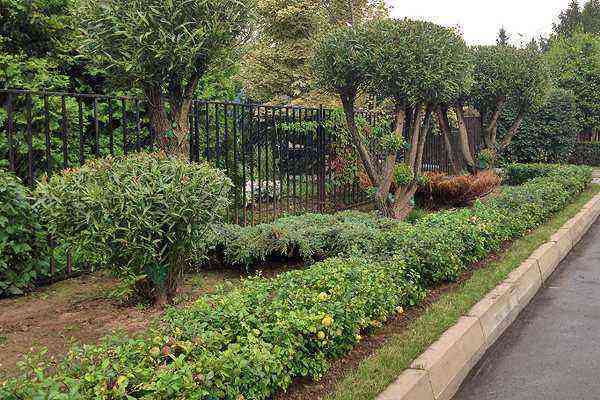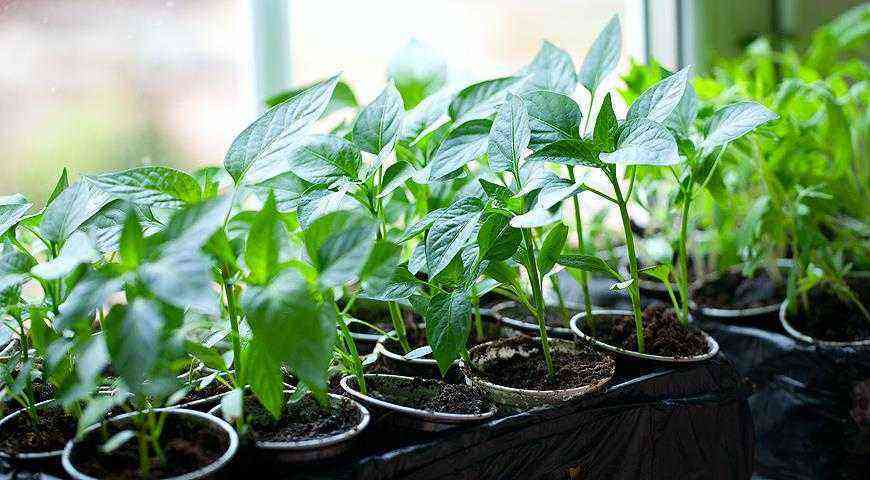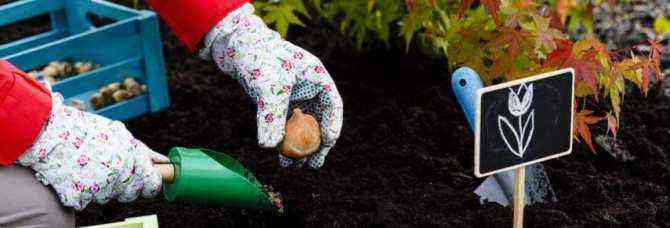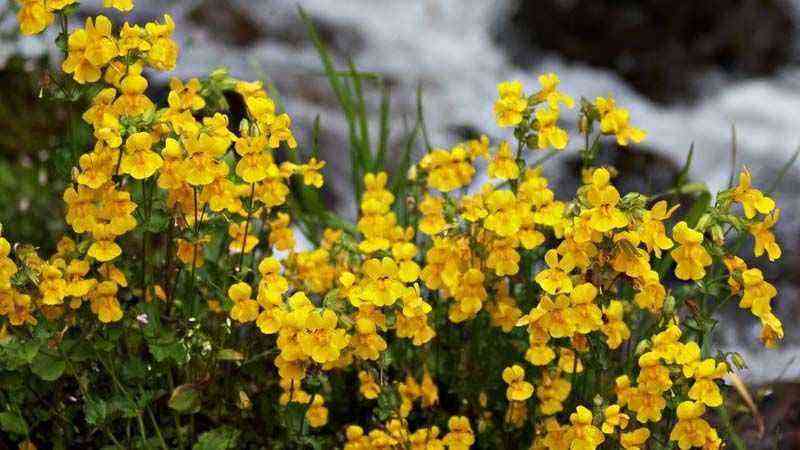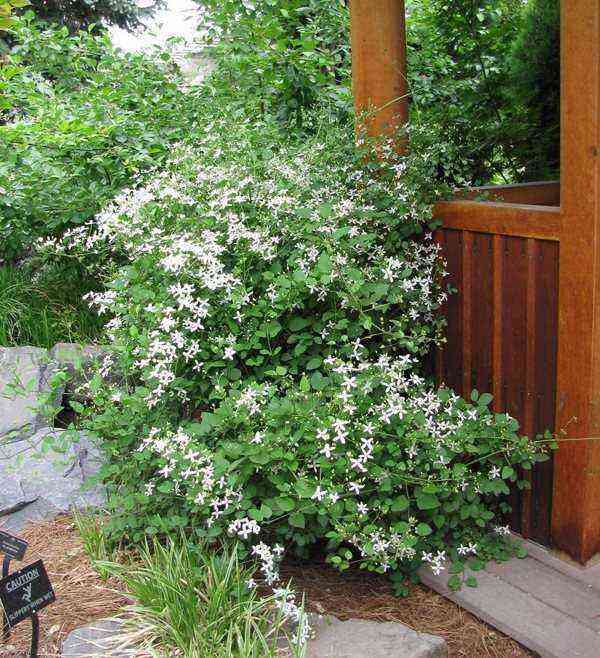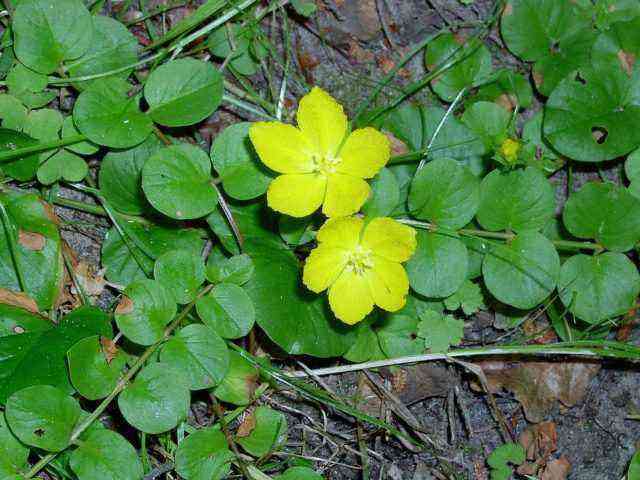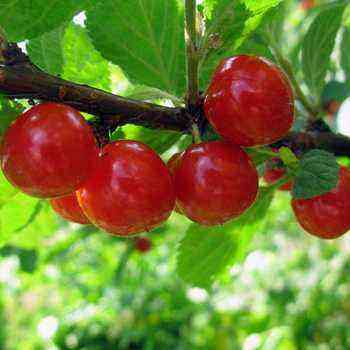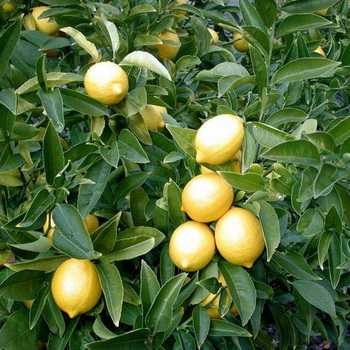 Just by planting a lemon seed in a pot, you can achieve flowering and fruiting. Of course, citrus fruits ripened on the branches of such a home shrub will be inferior to store specimens in size, but will not lose their taste. Reproduction of indoor lemons by cuttings is much more effective: you will learn about all the intricacies of this process, as well as other agricultural methods of caring for a crop, by reading this material.
Just by planting a lemon seed in a pot, you can achieve flowering and fruiting. Of course, citrus fruits ripened on the branches of such a home shrub will be inferior to store specimens in size, but will not lose their taste. Reproduction of indoor lemons by cuttings is much more effective: you will learn about all the intricacies of this process, as well as other agricultural methods of caring for a crop, by reading this material.
Lemon (Citrus limon) belongs to the Root family. Homeland – the tropical forests of Southeast Asia, where it was cultivated at least 2500 years ago. In ancient China and India, the medicinal properties of limung were well known – that is how they called lemon there. In the East, lemon was used as an antidote for snake bites, as well as to prevent outbreaks of cholera and plague epidemics. Ibn Sina recommended it for sea fever, and also used it to relieve toxicosis in pregnant women. He also compiled a recipe for a medicine based on lemon juice that heals from gonorrhea, which has only slightly changed, has come down to our time.
From Southeast Asia, lemon penetrated into Mesopotamia. Then to Palestine (in the XNUMXth century), from where it came to Italy with the crusaders and gradually spread throughout Europe, and then came to Russia.
Blooming and fruiting indoor lemon at home (with photo)
Perennial evergreen, easy to form, with a round, compact crown and few thorns. The flowers are single or in small racemes, white, very fragrant.
With good indoor care, you can achieve the flowering of homemade lemon, the plant enters fruiting in the third or fourth year. The fruits ripen in autumn.
An evergreen tropical plant, lemon is a stark contrast to our deciduous fruit trees. In tropical and subtropical warm climates, lemon trees bloom, grow and bear fruit throughout the year. In the presence of mature fruits, new buds, flowers and ovaries are formed, new shoots and leaves appear. According to these characteristics, it can be attributed to the group of remontant plants. Leaves on lemon change gradually as they age. Each leaf lives on average about two years, and under good environmental conditions and care, up to 3 years. Premature shedding of leaves indicates improper care and growing lemon at home. Under favorable environmental conditions, the lemon tree has 3-4 growth periods during the year, instead of one, as in deciduous ones. Consequently, the leaves of a lemon will differ not only in the years of their formation, but also in the periods of growth. Leaves of spring growth are usually larger and dark green in color. Summer leaves are smaller, with less intense color of the plate.
Between periods of growth, each branch or shoot undergoes a period of temporary dormancy, when new leaf and wood tissues are ripening. New growth usually begins only after the end of the ripening process of the shoots. Their growth does not begin at the same time. Some of the branches may be in the period of growth, and some, on the contrary, in the period of growth dormancy, which indicates some independence of individual parts of the crown. The presence of weak growth or its absence also indicates unfavorable environmental conditions or lack of nutrition, apart from cases of excessive flowering and fruiting, when there is often no growth of new shoots at all. Lemon leaves differentiate according to their purpose. Young, growing leaves, before ripening, are mainly consumers of nutrients. The end of maturation is characterized by the density of tissues, their elasticity and the acquisition of a normal, more intense green color, which is due to the large formation of chlorophyll. Unripe leaves always have a light yellow-green
coloring. The leaves of the last year determine the yield and growth vigor of the shoots of the current year. They are physiologically active from the spring and provide nourishment to the entire tree. The newly appeared foliage of the current year is included in the nutrition of the body after maturation. Old leaves are a kind of storehouse of nutrients, and the outflow of carbohydrates to them is as needed. If in deciduous trees the leaves fall off in the fall, and the tree has a supply of nutrients sufficient for the formation of new leaves, shoots and flowers, then with the lemon we have a different position. After the foliage has fallen, the tree can only restore the leaf surface, but it will no longer yield a harvest.

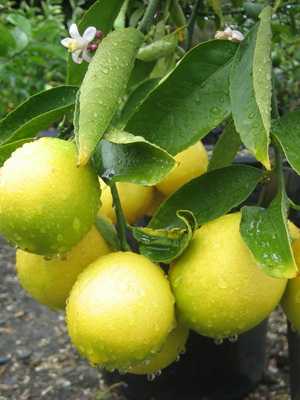
This suggests that the leaves of the evergreen lemon tree are not only a producer of nutrients, but to some extent a storage location. According to A.I. Samarsky, for the formation of normal growth of one lemon fruit, it is necessary to have at least 10 physiologically active leaves, but in addition to fruits, the entire crown and root system of the tree need the activity of the leaf apparatus. Therefore, the lemon tree should be well leafy, the leaves should be looked after, i.e. create conditions for their maximum productivity: it is necessary to protect, preventing premature shedding.
The crown of a lemon consists of various types of branches and shoots. The skeleton of the crown is built from branches of 1, 2, 3 orders of branching and, as a rule, fruit formation does not occur on them. Fruits appear on branches of the 4th and higher orders. Knowing this regularity in lemon, it is not difficult to regulate the timing of the beginning of fruiting. Applying pruning and pinching of growing shoots with several periods of growth per year, branches of two to three orders of magnitude can be grown. Due to the periodicity of growth processes, lemon shoots can be one-sprouted, two- and three-sprouted, vegetative and fruiting. Lemon in a long day has a tendency to grow violently, so fatty shoots often appear in the crown.
After fruiting, the branches of indoor lemon gradually age and dry out. Without active human intervention, the crown thickens, the crop moves to the periphery of the crown. The upper, upright branches and shoots often do not bear fruit; their increased growth energy must be reduced on a daily basis by pruning, pinching and bending down. With proper care of the crown and soil, you can introduce lemon into fruiting at home on all types of branches of all growth periods, but in the natural course of crown development, shorter, thinner, horizontally arranged fruit branches, which are often called fruit branches in fruit growing, bear fruit.
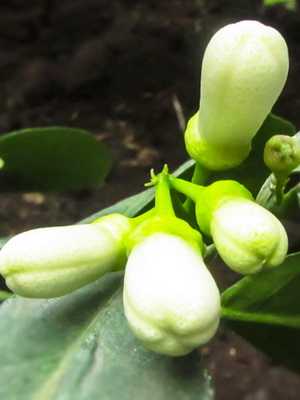

The buds can appear at different times of the year. The rate of their development primarily depends on the air and soil temperature. At a temperature of 14-16 °, the development of the bud from the appearance to the blooming of the petals takes 40-50 days. As the temperature rises, the development of buds accelerates, but the percentage of useful ovary decreases; the number of flowers and buds on an adult tree reaches a thousand, but most of the resulting flowers and ovaries crumble, and the percentage of useful ovary ranges from 3 to 17.
Massive spring flowering of indoor lemon lasts about 10 days. At this time, you can see the structure of flowers. Under unfavorable weather conditions – drought, dry wind, high temperatures, etc. – or lack of nutrition, buds and flowers are deformed and develop abnormally. The pistil is underdeveloped to one degree or another. Filaments and anthers are thin, pollen is either absent or not viable. The flowers are also sharply reduced in size. A normally developed lemon flower should be large, with five slightly colored petals. Numerous stamens tightly surround the pistil, often growing together into bundles or tubes. The stigma slightly protrudes from the anthers beyond the circle on a thick elastic column. Only such a flower can produce a normally developed ovary.
Look at the photo of a lemon during flowering:
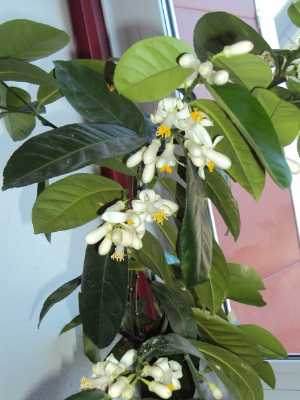

After the lemon has flowered at home, from the moment the petals fall to the beginning of fruit ripening, it takes about 150-170 days, under favorable environmental conditions. The first shedding of the ovaries takes place a few days after the petals fall. Secondary shedding – when the ovaries reach the size of a small nut 10-15 mm in diameter. During this crucial period, it is necessary to monitor the plants and ensure their requirements for growing conditions.


Lemon fruits can hang on the tree for up to 2 years. Full ripening is characterized by the yellow color of the fruit, which is normal for this variety. If such ripe fruits are left on the tree, they will turn green again, will again develop in size, and the peel grows especially strongly. In the future, such fruits turn yellow again, as if passing the ripening stage for the second time. The timing of the entry into fruiting of a tree grown by vegetative propagation depends on the agricultural technology used. Plants grown from seeds usually begin to bear fruit at 8-10 years of age, that is, after they have passed all stages of their development. The quality of the fruit varies with the periods of growth and ripening. The fruits of summer development with an abundance of heat, light and moisture give the best indicators – a thin peel, aroma, high acidity, etc. With a lack of heat, the peel grows, the juiciness of the fruit and its acidity decrease. Seedless fruits are valued above seed, therefore no cross-pollination measures are recommended, but for
do bear in mind that some varieties (Genoa, Lisbon and others), when self-pollinated, form up to 70-80 percent of seed fruits.
Below are the best varieties of lemon with photos and descriptions.
What an indoor lemon tree looks like: photos and descriptions of varieties of domestic plants
For growing lemons indoors, the best varieties are:
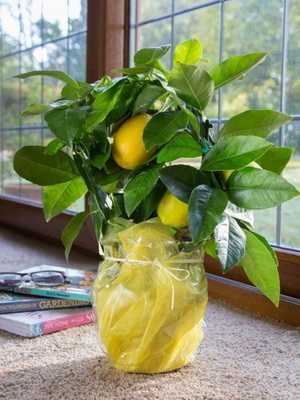
Chinese dwarf ‘Meyer’ (‘Meyer’)
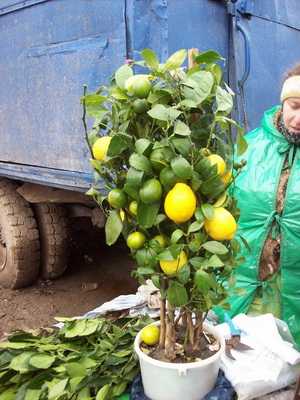
‘Pavlovsky’ (reaches 1,5 m)
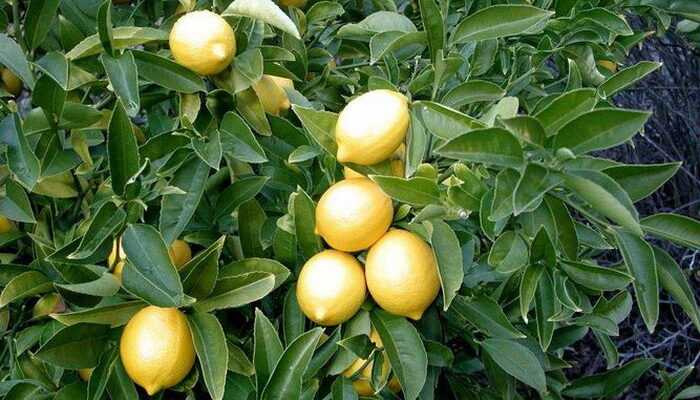
‘Kursk’.
Will grow well in large rooms, conservatories and greenhouses:
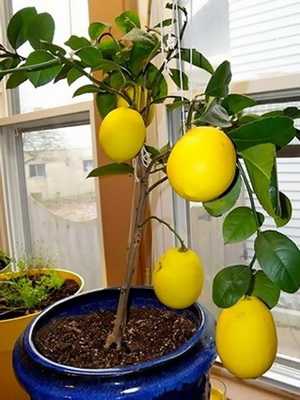
lemon ‘Lisbon’ (‘Lisbon’)

lemon ‘Novogruzinsky’ (‘Georgian’)
Each lemon variety has its own biological characteristics and, of course, not all varieties are suitable for a tub, especially for a room culture, since the climate of the room differs sharply from the conditions of the open ground and an earthen barn where industrial lemons can winter.
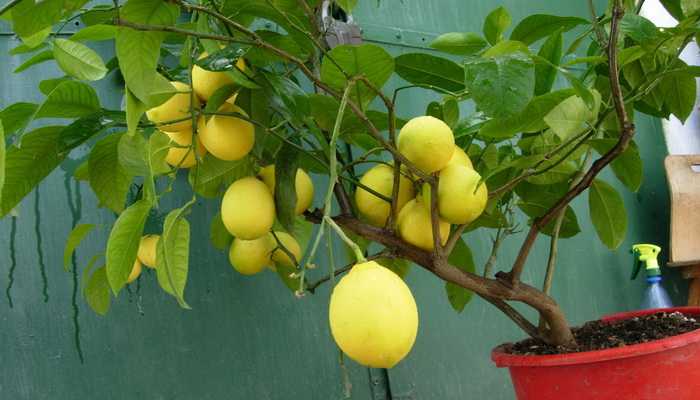
Pavlovsky. The most popular variety among fans of the middle lane. The modern Pavlovsky lemon is the result of a long and constant selection. A large army of unknown enthusiastic breeders has been working on plant breeding for more than 100 years.
Scientists of the Gorky Agricultural Institute carried out extensive scientific research of varieties. It was found that it is not one, but several dozen forms, differing in morphological, biological characteristics, different in lemons and biochemical composition. It is curious that they are not only in no way inferior, but often surpass the southern, free-grown fruits. Most of the samples are distinguished by high gustatory values, delicate aroma, and pleasant refreshing taste. The amount of vitamin C in the pulp varies from 25,5 to 57 milligrams per 100 grams of the substance, and in the peel it is 1,5–2 times more. The acidity ranges from 4,3 to 7 percent, and its ratio with sugars and aromatic substances is very favorable in most cases. The average thickness of the peel is 4–5 millimeters, but there are also thin peels – with a peel of 2–3 millimeters.
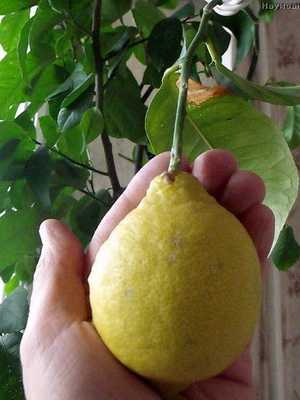
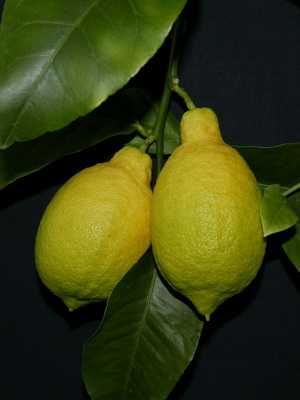
The lemons of this tree look like real giants: the fruits of the Pavlovsky variety are large-fruited, reaching 300-500 grams, but generally their weight is 120-150 grams. The surface of the fruit is smooth and shiny, rarely slightly lumpy, rough to varying degrees. In shape, there are oval, rounded and oblong – fruits.
The usually low yield of Pavlovsky lemon (usually up to a dozen fruits per tree) is fully compensated by its relatively good adaptability to insufficient illumination and dry room air. It is a self-pollinating plant with a very pronounced remontantity, although the most abundant fruit setting occurs twice: in spring – in March and April, and also in autumn – in September and October. Each flower (usually 3-4 centimeters in diameter) blooms for 7-10 days. Homemade lemon fruits fully ripen in 8-9 months, and in hot apartments with insufficient lighting – in about a year.
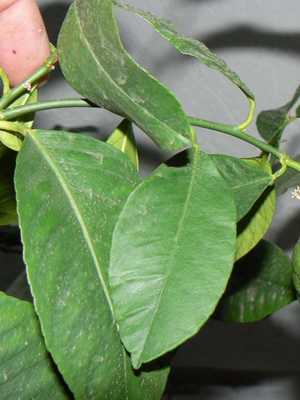
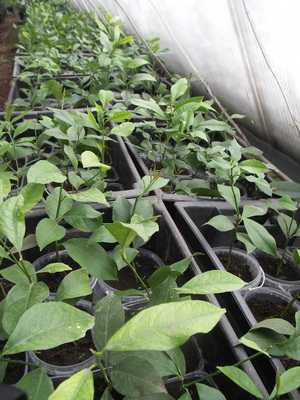
The leaves of this variety are relatively large, 13-15 centimeters long, 5-8 centimeters wide, of various shapes – oval, oblong, obovate or broadly lanceolate, varying in the degree of serration at the edges.
The plant grows in the form of a small bush or tree, reaching a height of 1,5, rarely 2 meters. The crown is usually round, up to a meter in diameter, with branches hanging down, sometimes with short thorns.
This variety of homemade lemons is characterized by growth periods: the first – from the end of March to June, the second – from the second half of June to mid-July, the third – from mid-September to the end of October.
In Pavlovo, when growing such indoor lemons, they are traditionally propagated by cuttings, but other methods are also possible. Moreover, grafting significantly accelerates its development and sometimes has a positive effect on yield.
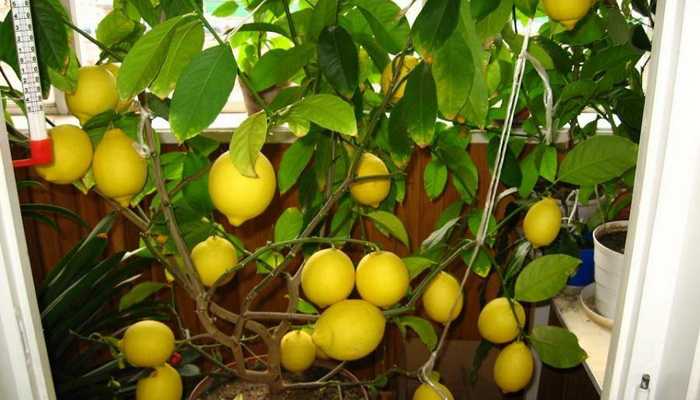
Novogruzinsky. Selected by the breeder of the Sukhum experimental station VIR N.M. Murri. On the plantations of Georgia, it is considered the best in terms of yield and quality of fruits.
The tree is vigorous, with a beautiful leafy crown, long thin shoots, large autumn growth. The average size of the leaves is 12 × 4,5 centimeters, they are light green, graceful in shape – elongated, elongated with a pointed apex and a slightly rounded base, with a short, slightly rounded petiole. The flowers are large, the outer side of the petals are lilac. When describing this indoor lemon, it is worth noting its spectacular fruits: they are elongated-oval or oblong-ovate, with a wide blunt nipple, smooth-glossy peel up to 5 millimeters thick, average weight 120-150 grams. Juicy and tender, finely grained pulp satisfies the most refined taste, has a pleasant acidity and a very strong aroma, especially in freshly cut slices.
Georgian researchers determined the chemical composition of the pulp: sugar – 1,7 percent, acid – 6 percent, vitamin C – more than 58 milligrams per 100 grams of the substance.
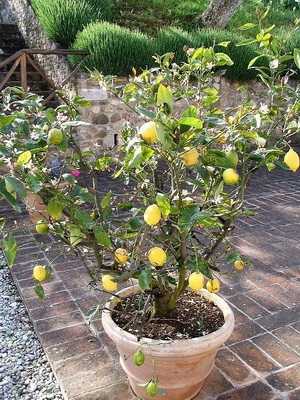
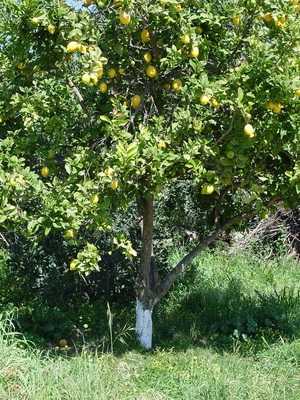
In the open field, it grows into a powerful five-meter giant, completely covered with beautiful fruits (up to 1300 pieces on an adult tree!). With good care of this lemon in indoor conditions, it is also very harvestable, annually pleases with dozens of well-ripening lemons. But this is the tallest of all the “home” varieties.
Blooms a year or two later than others. It is curious that his fruits in indoor conditions are larger than in the Black Sea gardens. The experience of Leningraders and fans of other regions convinces us that in vain this variety is recommended only for the southern regions. It is quite acceptable for middle latitudes, more than other varieties it needs pruning and shaping, but it is especially suitable for indoor landscaping of office premises, where the large size of its crown – up to two meters wide – is not an obstacle. A tall, slender, well-leafed plant with numerous brightly colored fruits seems to have been created to decorate the foyer, light corridors, halls, lounges.
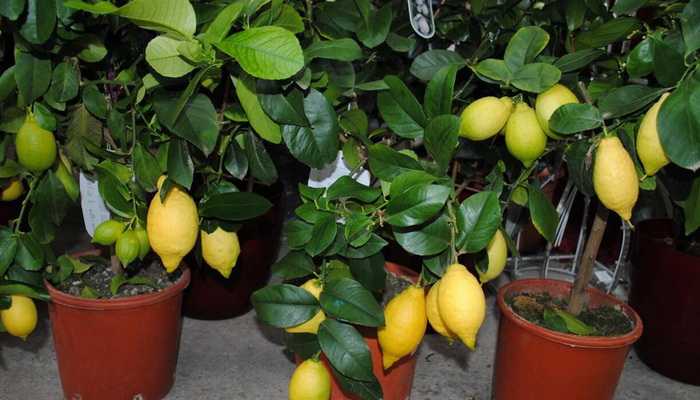
Kursky. Bred by A. A. Fomenko, an amateur citrus grower of the city of Kursk, in the first post-war years by selection and directed education of Novogruzinsky lemon seedlings. When describing this plant, the unpretentiousness of lemon, relative resistance to dry air and lack of light, and high yield are noted.
The ancestor of the variety – the mother plant – in the first six years of life gave a total of 62 fruits, and in fourteen – already more than 800, weighing up to 300 grams each. They are quite sour, aromatic and tasty, they are stored for a long time. The tree has, perhaps, only one drawback – vigorous growth. Grows tall and spreading. Therefore, it is suitable, first of all, for large wide windows and requires annual pruning, crown formation (however, the author managed to select one medium-sized lemon in 15 years of growing and breeding Kurskiy lemon). Responsive to good soil and enhanced nutrition, regular feeding with organic and mineral fertilizers. Adapted to growing not only in the room, but also in trenches, soil greenhouses.
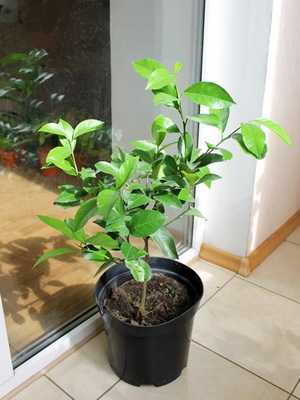
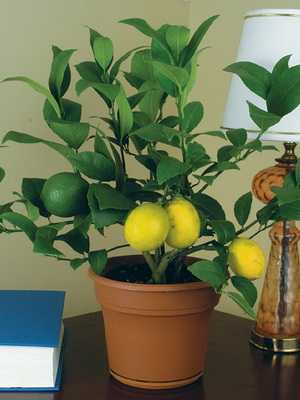
Meyer (also called Chinese dwarf, or Chinese lemon). At the beginning of the century (in 1908), the American researcher Franz Meyer discovered it in the houses of residents of the vicinity of Beijing, who grew trees in cramped pots. Lemon is named after its discoverer, but its “parents” are still not indicated in its “passport”. According to the assumption of some scientists, this is a natural hybrid between an ordinary lemon and an orange, others consider it a derivative and native selection (perhaps a variety or hybrid of a special – Cantonese – lemon, characterized by an orange-red peel). From China, this hybrid of the United States and in the open field turned out to be very productive: young four-year-old trees gave 100 pieces of fruit each, and one, five-year-old, planted in Alabama, once broke all records – 1000 fruits!
In 1929, this lemon was brought to our country from the subtropics of the United States. But due to a not quite familiar taste, it did not become widespread immediately. However, today, due to increased frost resistance, drought resistance and low susceptibility to the disease, it has spread widely in the republics of Central Asia and Georgia. More recently, the Meyer lemon returned to the pot – it began to be cultivated along with other traditional indoor varieties.
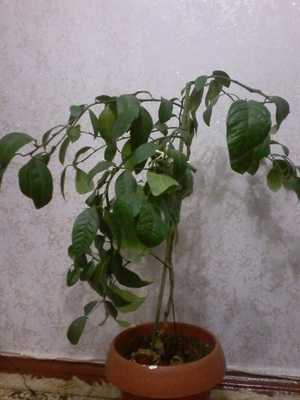

The Meyer variety is especially suitable for small apartments. The main characteristic when describing this lemon variety is its extreme short stature. Among other varieties, it is the smallest, with a compact, well-leafy crown.
Leaves are relatively small to medium in size, dark green. Buds and flowers are usually in clusters, sometimes single. Smaller than other lemons, white or bluish, autumn colors sometimes have a purple tint.
Rounded, almost without the usual nipple, medium size (100 grams each), the fruits are very juicy (up to 50 percent juice), not too sour and with a peculiar taste. The peel, they have a bright yellow, sometimes orange color, thin, with a smooth shiny surface.
The chemical composition of the pulp: sugar – 3,5 percent acid – 4,1 percent, vitamin C – about 40 and P – no more than 22 milligrams per 100 grams of substance, it follows that the nutritional and medicinal benefits of fruits are noticeably lower than those of others varieties. But, as they say, there is no dispute about tastes: the inhabitants of Tajikistan, for example, prefer Meyer to everyone else.
With good care of this indoor lemon at home, the yield is high, the tree begins to bear fruit earlier than other varieties – already in the second or third year of life, and the specificity of the Meyer lemon is that buds are formed in clusters on the shoots of the current year (to prevent tree depletion, part the buds must be removed).
The dwarf tree is biologically plastic. In summer it tolerates heat, but it grows well only on light windows when the air is humidified in the winter months, otherwise the plant loses almost all its foliage and often dies.
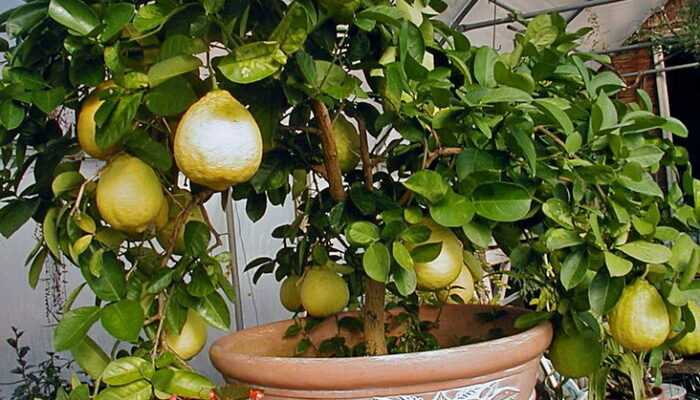
Genoa. The tree is weak, without thorns, with a good leafy, beautiful crown.
Very productive, blooms and bears fruit evenly throughout the year. The quality of the fruits is high, and their peel is sweet, without bitterness. The variety was bred in the United States and, back in the 40s, was recommended for growing on a windowsill. In Russia, it also showed itself well at home. So, in the experiments of scientists, four-year-old densely leafy trees grown in a pot culture gave an average of 50 fruits.
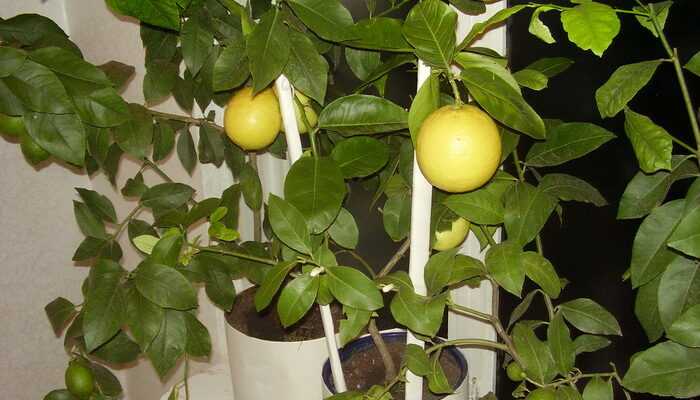
Panderoza. A representative of a genus close to lemon (presumably a hybrid of lemon with grapefruit).
First received by the Batumi Botanical Garden in 1926 from the USA. On our plantations it is found only in collections, but in indoor conditions, due to its “docile nature” – almost everywhere. And every year it is spreading more and more (the authoritative expert on citrus fruits, Professor A.D. Aleksandrov, the author of fundamental works on growing lemons in the open ground and at home, grew the Panderoza variety on his windowsill).
The tree is medium-sized, with a spreading crown, short thick shoots. Oval leaves are very dense and large, their size is 15 × 8 centimeters. Blossoms in bunches, profusely. There are so many flower buds that they often interfere with the normal formation of a seedling: instead of branches and leaves, buds form on a rooted or grafted cuttings (the same feature is often found in Meyer lemon). When caring for such a lemon tree at home, the buds must be carefully and timely (before blooming) cut off until a normal shoot appears, which quickly turns into a twig with leaves rounded at the ends.
Panderoza flowers are usually large with long petals.
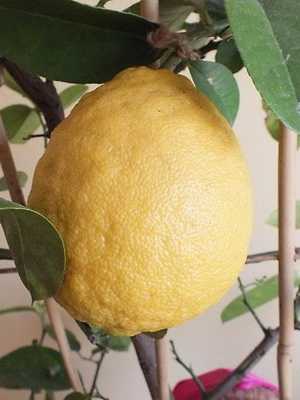
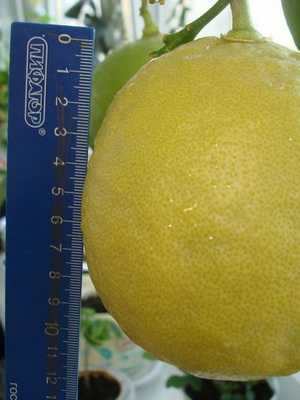
Fruits weighing up to 500 grams or more are obovate or pear-shaped with light greenish pulp and many seeds. The peel is thick (up to a centimeter), slightly rough. The chemical composition of the pulp: sugar – about 4 percent, acid – 4 percent, vitamin C – more than 36 milligrams per 100 grams of substance. Productivity on a 12-year-old tree in the open field – Up to 300 fruits, and in the indoor garden – several dozen.
Next, you will learn how to grow a lemon tree at home and how to propagate the plant.
How to grow lemon and how to care for it at home
It is very pleasant to have a lemon tree at home, because it is not only beautiful, but also useful – the plant emits valuable phytoncides, clearing the air of the room from a variety of harmful microbes. Of course, in order for this to happen in sufficient volume, the tree must already be large enough, or there must be several of them.
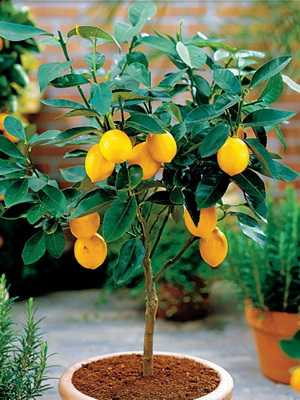

When cultivating lemons at home in a pot, it should be remembered that they are all light and thermophilic, do not tolerate drafts, they like to observe the watering regime and to have good drainage, they need abundant feeding, humid air and a cool dormant period in winter. In summer, plants should be exposed to fresh air. If a lemon receives plenty of warmth, light and moisture, then it blooms and bears fruit throughout the year. On it you can see fruits, ovaries, flowers and buds at the same time. At a temperature of -4 ° C, the tree dies. Since these plants are light-requiring, then in autumn and winter, when growing lemons in indoor conditions, it is advisable to increase their daylight hours by fixing a weak light bulb above the tops of trees at a distance of 60-70 cm.

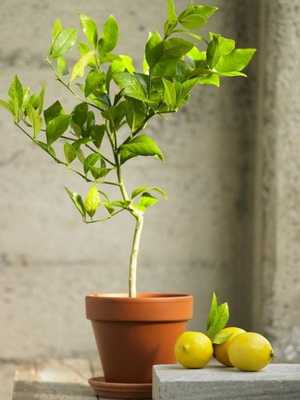
It is best to keep citrus fruits not on the windowsill, but next to them, on a stand. If the temperature in the room is above 20 degrees, then the plant must be sprayed frequently and the humidity in the room must be increased by placing bowls of water. Moreover, today you can purchase a special device that helps in caring for lemons and other plants – an air humidifier. It will be useful not only for home cultures, but also for yourself, since during the heating season the air in our homes is always dry, which adversely affects the work of the respiratory system and the condition of the skin, and causes irritability.
The growth of shoots and leaves begins at a water and soil temperature of +9 ° C. A normal temperature for growth is considered to be a temperature of 16-18 “C. Higher temperatures during flowering are harmful. Dryness causes falling of fruits and flowers, recommended humidity – 75%, spraying – in the morning and in the evening. With good care of the lemon tree at home, the leaves can live up to 3 years. Last year’s leaves retain all the nutrients and provide nourishment for the entire tree. To grow at least one fruit, the tree must have at least 15 leaves. Therefore, they should be protected.
Good maintenance of indoor lemon in a pot requires bright, sunny rooms. In winter, for varieties ‘Meyer’, ‘Pavlovsky’, ‘Kurskiy’ it is enough to lower the temperature to 10-14 ° C. For other varieties, a cool, bright room at a temperature of 3-5 ° C is preferable.
The substrate is prepared from turf, humus and sand (1: 2: 1).
In order to care for the lemon tree correctly, as practice shows, it is better to plant its clay pots. However, there are cases when plants develop successfully in glass jars, old buckets, wooden tubs and plastic containers.
Plant lemon in the room: care and growing at home in a pot
When growing lemon in a room, you need abundant watering in summer, moderate in winter. It is important to ensure that there is no stagnant water in the plant pot.
When caring for homemade lemon, the plant is fed with complex mineral fertilizer once every two weeks during the growing period.
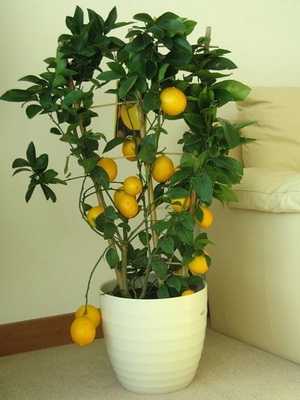
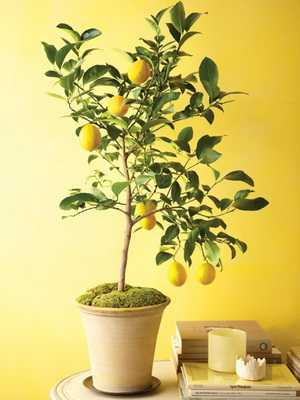
It is important from the very beginning to correctly form the crown of the plant. To do this, pinch the upper (apical) bud from the cutting, and break off the top of the seedling above the fifth or sixth leaf. Of the shoots formed, two or three should be left growing in different directions. Lateral shoots must also be pinched over the third or fourth leaf. The lemon tree should grow evenly in all directions, and not consist of just a few long, stretching shoots. It is necessary to cut out all the shoots growing inside the crown, bend and tie in a horizontal position the shoots that grow intensively upward. This must be done due to the fact that the fruit of the lemon is formed precisely on the lateral horizontal branches.
Until the formation of the skeletal branches of the crown is over, fruiting should not be allowed. The appearance of buds will stop the vegetative growth of the bush.
In February – March, a fruiting lemon tree must be freed from diseased, dry and broken branches, cut off strongly growing vegetative and fatty shoots, small fruiting branches.
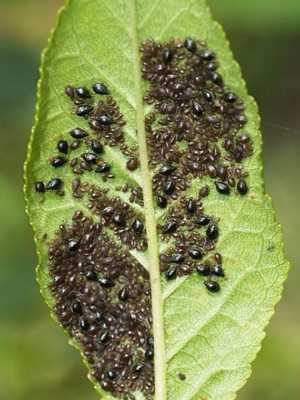
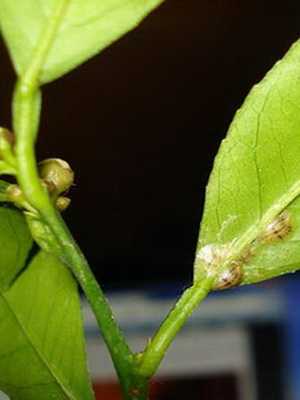
The main pests are red mites and aphids. A silvery mite, a soft false shield and a whitefly may appear on the fruits. A sooty fungus settles on the secretions of aphids and scale insects. Root rot and anthracnose are the most common diseases.
Reproduction of indoor lemons at home by cuttings
Breeding. Layering, grafting, cuttings in early spring. For rooting, it is best to take annual ripe shoots.
At home, the simplest and most affordable is another method of vegetative propagation, namely propagation by green cuttings. This is how pelargonium and many other indoor ornamental plants are propagated. Lemon multiplies in this way very easily and quickly. To do this, take a young lemon shoot that has grown in the current year, but has fully formed leaves. Suppose this shoot has six leaves. We cut it into three parts (each part should have two sheets). This should be done with a sharp knife, or even better with a sharp razor. This will give us three cuttings. The longer the branch, the more cuttings will come out of it.
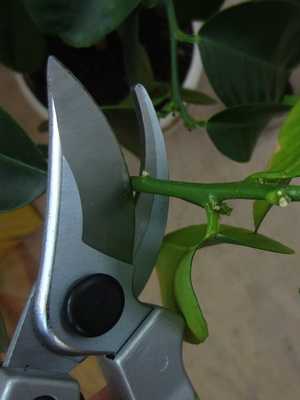
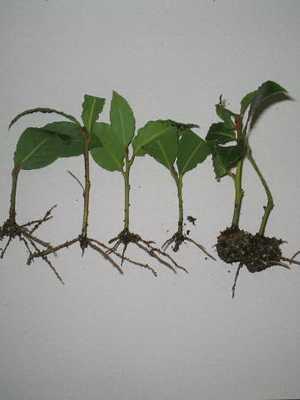
Each of these cuttings takes root easily if the conditions are right. Sand with a small admixture of garden soil is most suitable for rooting cuttings. We fill the flowerpot with clean sand, pour water over it and immerse the lower end of the cutting to the base of the leaf in the sand. In the same pot of wet sand, you can plant one, two, three or even more cuttings, depending on the size of the pot. They can be planted fairly close to each other, but so that the leaves are well lit.
Young, tender lemon leaves are known to evaporate a lot of water. If the water supply is not replenished, the cutting will dry out and not take root. Therefore, something must be done to reduce the evaporation of moisture from the leaves. For this, cuttings of pelargonium are covered with a glass or glass jar, set upside down. You can do the same with lemon cuttings, but it is better to cover the cutting with a bag made of transparent plastic wrap, tying it with a string around the pot. Due to this, the air space around the cutting will be saturated with water vapor and the lemon leaves will evaporate moisture very slowly.
To keep the sand in the pot constantly moist, the pot of cuttings must be placed on a tray, in which water must always be poured. It will seep up and moisten the ground sufficiently.
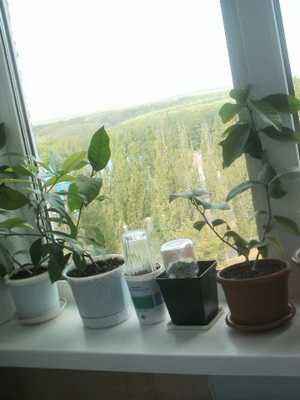

We put the pot on the sill of a window facing south so that the plant is in a warm place and its leaves can intensively absorb carbon dioxide from the air.
It is best to cut lemons in the summer, when the apartment is very warm, that is, in the second half of June and July.
If, however, cuttings are cut in cooler times, for example, in March, April or October, then additional heating of the substrate in which the cuttings are rooted should be provided.
At home, the easiest way to do this is in the following way. We take a cardboard box or wooden box and cut a hole in the top lid so that the pot goes through it, but does not fall inside. At the bottom we place an electric light bulb with a power of 30 watts (or less) so that it burns there all the time. The light bulb is known to give off a certain amount of heat, which will heat the air in the box, and thus the substrate in the pot where the lemons take root.
However, care must be taken that the substrate temperature does not rise too high, it would be best to purchase a laboratory thermometer and make trial temperature measurements. Even before planting the cuttings, the thermometer is immersed in the sand in a flower pot, a light bulb is turned on and observed for several days. The rooting of cuttings is especially favored by a temperature of 20 to 25 degrees, but in no case should it rise above 30 degrees. Having picked up the appropriate light bulb and the dimensions of the box or having made holes in the box to ensure ventilation, we finally set the temperature we need. The question arises as to how, in such a device, to ensure that there is always water in the saucer (pallet) under the pot. To do this, we put some kind of support on the bottom of the box, a saucer on the support, and a flower pot in it. Lifting the pot up every day, we check if there is water in the saucer, and add it if necessary.
Such heating of the substrate is needed only if it is still cold outside and the windowsills are cold. When the air temperature in the room is 20 degrees, and on the windowsill of 15 degrees, the temperature of the sand in the pot will probably not be higher than 16-17 degrees, and this is not enough for good rooting. The cuttings will eventually take root, but this will take significantly longer than at the optimum temperature. In summer, in warm weather, heating of the substrate is not needed. If there are several lemon plants and more cuttings can be obtained from them at the same time, then instead of a flower pot, you should take some kind of flat vessel.
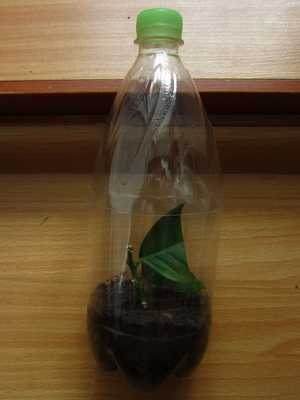
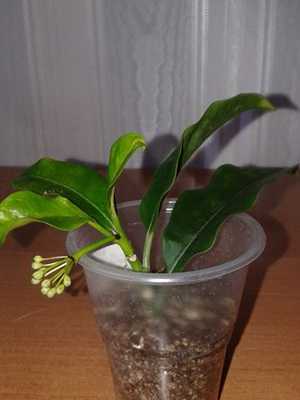
At home, the rooting of lemon cuttings continues in the warm season for 5-6 weeks. You can make sure that the cuttings have taken root by removing them from the sand, but it is not recommended to do this during rooting. If buds have sprouted on the cuttings and new shoots with small leaves have formed, this means that they have taken root. Now they need to be carefully removed from the sand and, having shaken off the sand, transplanted into pots.
In the greenhouse, lemons can be grafted almost all year long.

